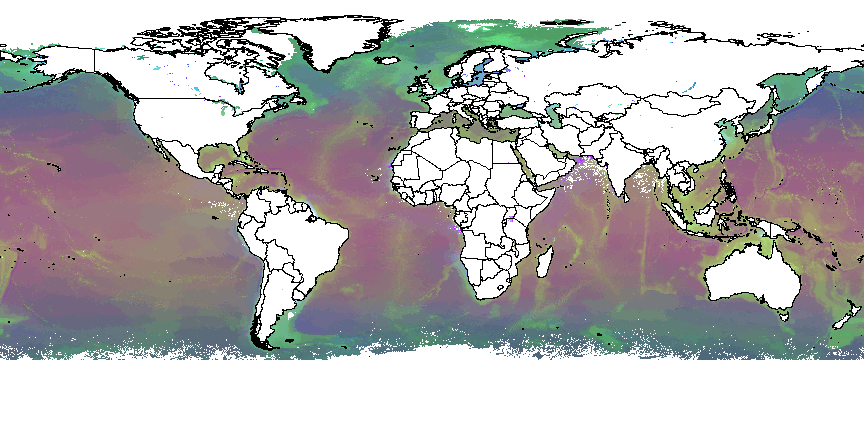
William W. Hargrove, Matt Fitzpatrick, Arthur Stewart, Don Catanzaro,
David Eskew, and Forrest M. Hoffman
 |
Aquatic invasive species are transported with normal ship traffic, often as ballast water. This study attempts to predict susceptibility by quantifying the degree of multivariate similarity of aquatic environments worldwide to selected locations within the Great Lakes, USA.
Our approach assumes that, sooner or later, transport of invasive aquatic organisms will occur to and from all points on the globe. Following such human-mediated transplantations, it is the degree of similarity of the new aquatic environment to the original environment that determines whether the invader will successfully establish a population in the new location.
Toward this end, we have produced multiple sets of aquatic ecoregions. The aquatic ecoregions shown here also include bathymetry, or water depth.
The world map below shows the 1000 most-different global aquatic ecoregions, shown in random colors, based on minimum, maximum, and mean surface water temperature, mk90, nlw551, chlorophyll content, and bathymetry.
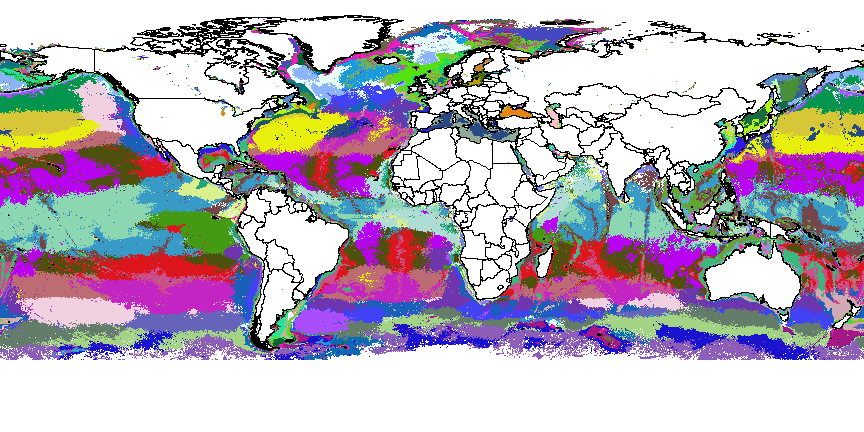 |
A zoomed map shows the randomly colored aquatic ecoregions found within the Great Lakes, including bathymetry.
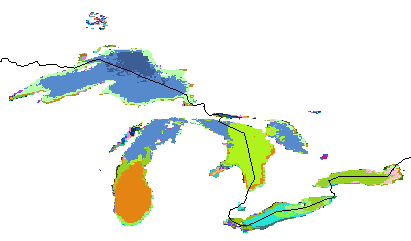 |
The map of Great Lakes ecoregions can be compared with a zoomed map showing the aquatic ecoregions of the Ponto-Caspian seas, shown in the same random colors.
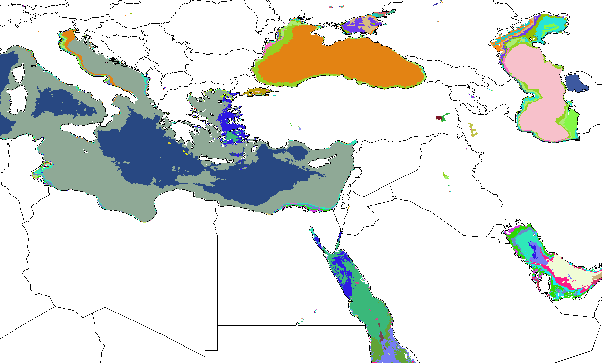 |
By performing a Principal Component Analysis on the data and generating the first three Principal Component (PC) axes, and then assigning each of those axes to the red, green, and blue color guns, respectively, we can statistically generate a color that reflects the proportional mixture of environmental conditions within each aquatic ecoregion. Using these Similarity Colors, two different aquatic ecoregions having nearly the same mixture of environmental conditions will be shown in nearly the same Similarity color.
visual inspection will indicate areas having similar environments.The 1000 most-different global aquatic ecoregions, including bathymetry, are shown below in terms of Similarity Colors.
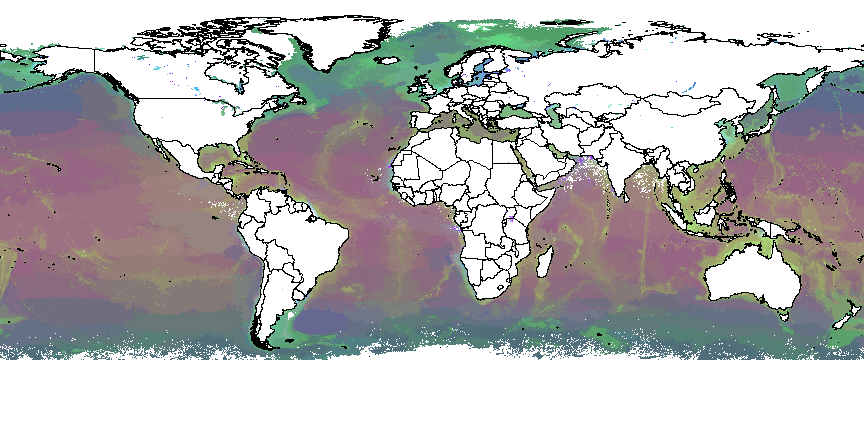 |
The similarity colored aquatic ecoregions from the 1000 set found within the Great Lakes are shown below.
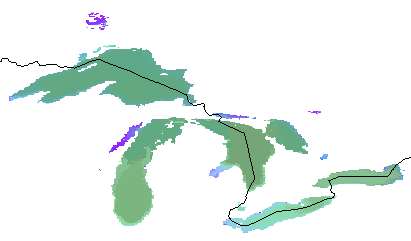 |
A zoomed map showing the aquatic ecoregions of the Ponto-Caspian seas from the 1000 set, shown in similarity colors.
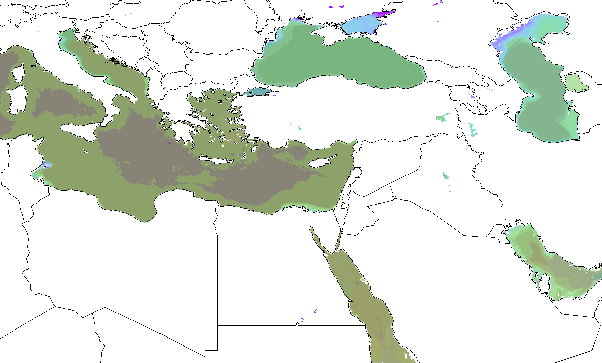 |
We repeated the global aquatic environments analysis using the same seven variables, but statistically delineating the 3000 most-different aquatic ecoregions. The same sequence of maps is shown below based on 3000 worldwide aquatic ecoregions.
The world map below shows the 3000 most-different global aquatic ecoregions, shown in random colors, based on minimum, maximum, and mean surface water temperature, mk90, nlw551, chlorophyll content, and bathymetry.
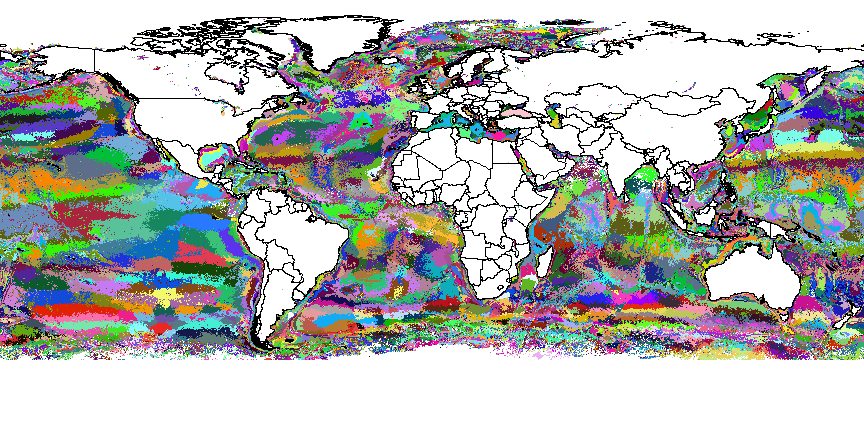 |
A zoomed map shows the randomly colored aquatic ecoregions from the 3000-ecoregion set including bathymetry, found within the Great Lakes.
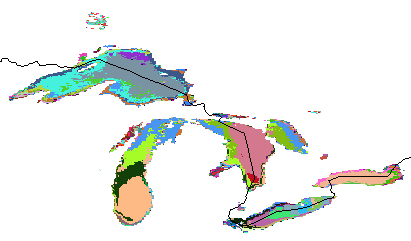 |
The map of Great Lakes ecoregions can be compared with a zoomed map showing the aquatic ecoregions of the Ponto-Caspian seas from the 3000-ecoregion set including bathymetry, shown in the same random colors.
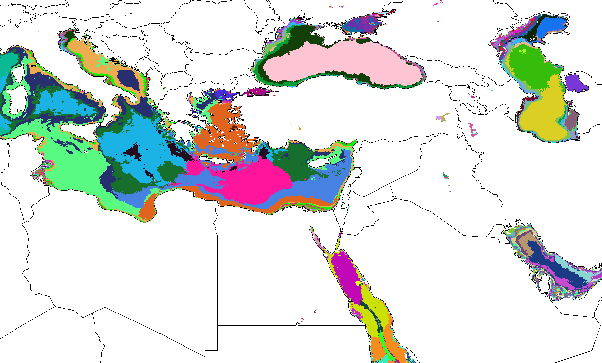 |
3000 worldwide aquatic ecoregions, including bathymetry, shown in Similarity Colors.
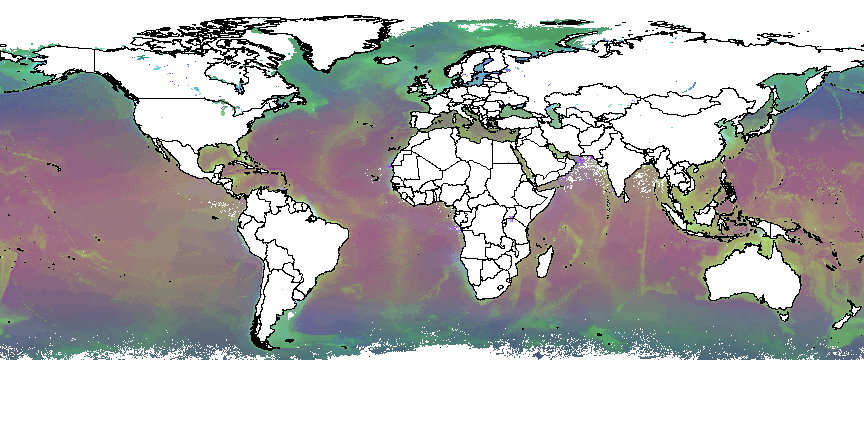 |
When using Similarity Colors, the map is nearly indistinguishable at this scale from the one based on 1000 aquatic ecoregions colored in Similarity Colors, despite the fact that the underlying polygons in the two maps are entirely different (the earlier map has 1000 categories, while this map has 3000). This convergence to a single appearance is because both sets of quantitative aquatic ecoregions, based on the same set of input variables, are explaining the same environmental gradients. Beyond a certain level of division, both maps capture those environmental gradients adequately at a particular scale. Thus, the MGC process is not sensitive to the selection of a particular level of division, and that choice is not critical to obtaining appropriate results.
The similarity colored aquatic ecoregions from the 3000-ecoregion set, including bathymetry, found within the Great Lakes are shown below.
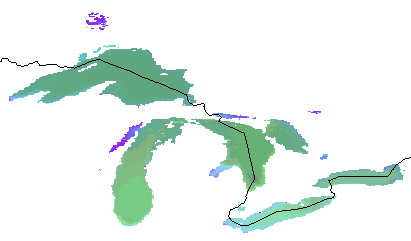 |
A zoomed map showing the aquatic ecoregions of the Ponto-Caspian seas from the 3000-ecoregion set including bathymetry, shown in similarity colors.
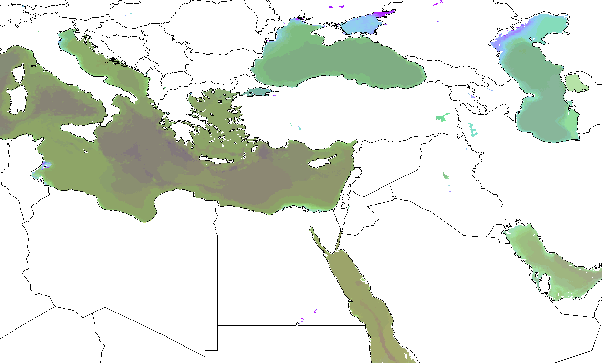 |
We repeated the global aquatic environments analysis using the same seven variables, but statistically delineating 5000 most-different aquatic ecoregions. The same sequence of maps is shown below based on 5000 worldwide aquatic ecoregions.
The world map below shows the 5000 most-different global aquatic ecoregions, shown in random colors, based on minimum, maximum, and mean surface water temperature, mk90, nlw551, chlorophyll content, and bathymetry.
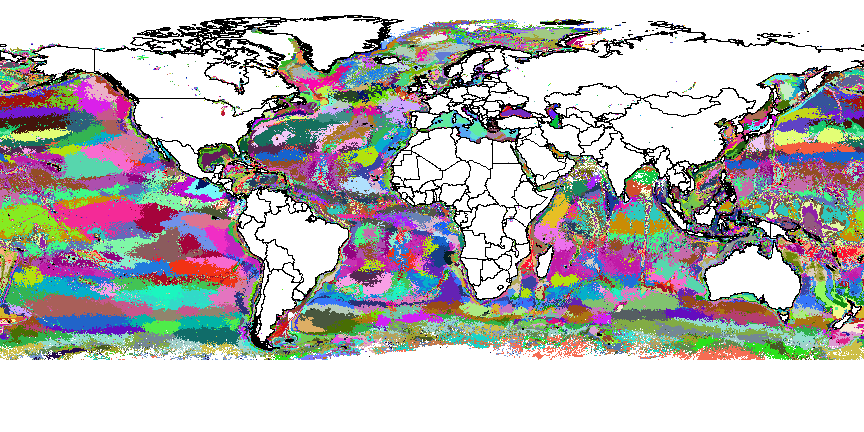 |
A zoomed map shows the randomly colored aquatic ecoregions from the 5000-ecoregion set including bathymetry, found within the Great Lakes.
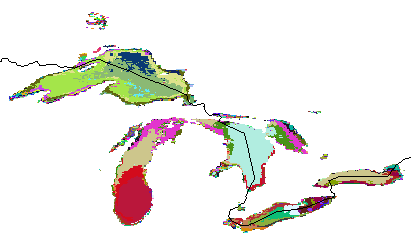 |
The map of Great Lakes ecoregions can be compared with a zoomed map showing the aquatic ecoregions of the Ponto-Caspian seas from the 5000-ecoregion set including bathymetry, shown in the same random colors.
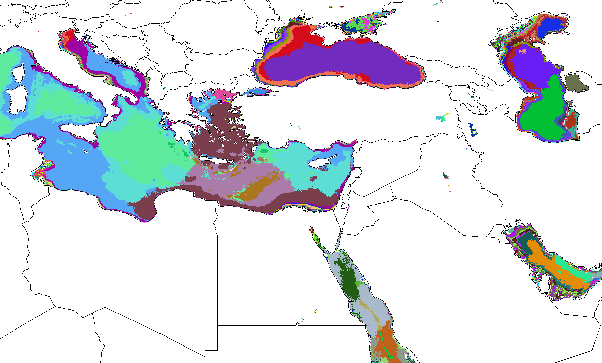 |
5000 worldwide aquatic ecoregions, including bathymetry, shown in Similarity Colors.
 |
When using Similarity Colors, the map is nearly indistinguishable at this scale from the one based on 1000 and 3000 aquatic ecoregions colored in Similarity Colors, despite the fact that the underlying polygons in the two maps are entirely different (the earlier maps have 1000 and 3000 categories, while this map has 5000). This convergence to a single appearance is because both sets of quantitative aquatic ecoregions, based on the same set of input variables, are explaining the same environmental gradients. Beyond a certain level of division, both maps capture those environmental gradients adequately at a particular scale. Thus, the MGC process is not sensitive to the selection of a particular level of division, and that choice is not critical to obtaining appropriate results.
The similarity colored aquatic ecoregions from the 5000-ecoregion set, including bathymetry, found within the Great Lakes are shown below.
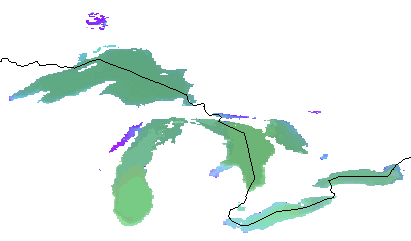 |
A zoomed map showing the aquatic ecoregions of the Ponto-Caspian seas from the 3000-ecoregion set including bathymetry, shown in similarity colors.
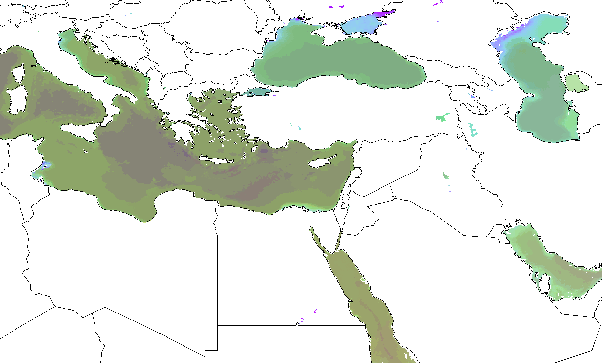 |